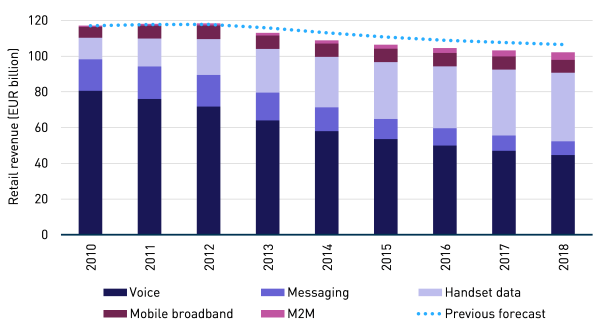Google Fiber represents the single biggest potential “overbuilder” challenge ever seen by the U.S. cable industry, which already faces competition from satellite, telco and wireless ISP competitors.
Overbuilders are independent fixed network service providers, typically offering triple-play services to residential customers in markets where telcos and cable TV operators also operate.
As such, the key business issue is whether a sustainable business case can be created, under conditions where the overbuilder has to contend with two entrenched cable and telco opponents.
Since 2000, the underlying revenue elements have changed a bit. Though the triple play has been considered essential by earlier generations of overbuilders, Google Fiber has chosen to lead with gigabit Internet access and supplement with video entertainment.
Though some will point to the concessions Google Fiber might obtain by working with municipalities (permitting, engineering, access to ducts and rights of way), such advantages are likely to represent only a relatively small part of overall costs.
The key challenges remain the actual construction of the access networks, even using gigabit opto-electronics and home-built consumer premises equipment.
Whether the Google Fiber business case is helped by in-house development of CPE also is an issue. Some might argue that building its own CPE cannot lead to lower costs. But it might be possible use of its own gear has some in-home equipment cost advantages.
What is not so clear is whether Google Fiber also has used the same approach for access network opto-electronics.
Some have estimated it would cost $400 billion to replicate Google Fiber on a national basis in the United States.
In that sense, overbuilders as a category of service providers are different from the thousands of independent wireless ISPs operating in the United States that tend to focus on Internet access rather than triple-play services.
Not since the 2000 time frame has overbuilding been a major new funding priority for many service providers, in part because it is so capital-intensive to create a new facilities-based network, using either the traditional hybrid fiber coax model preferred by cable operators or the fiber to home approach favored by telcos.
Overbuilders--both municipal and commercial--have tried to gain a foothold in several U.S. markets over the last couple of decades, with mixed success. RCN in the U.S. Northeast and Grande Communications in Texas are among the commercial providers that have achieved notable success.
Grande serves 140,000 customers, for example. RCN primarily focuses on high-density housing areas in Washington, D.C., Philadelphia, Lehigh Valley (PA), New York City, Boston, and Chicago.
A few municipal networks also have managed to create sustainable business models as well in smaller markets.
But Google Fiber might represent the biggest-ever challenge, in part because of Google’s ability to finance the networks, in part because Google’s business model might allow it to operate at lower costs than even cable operators, which after wireless ISPs and satellite providers, tend to have the lowest operating costs in the consumer services business.
Much depends on whether one believes Google Fiber actually is viewed as a long-term business opportunity for Google, or whether it primarily remains an effort aimed at prodding the rest of the ISP industry to upgrade bandwidth faster.
If Google Fiber represents the former, Google would seem to represent the most-serious overbuilder challenge the cable industry ever has faced.
Still, even without a full national deployment, Google Fiber has to be seen within the context of a broader policy effort aimed at gaining support from federal, state and municipal regulators to allow flexible deployments, while also prodding other ISPs to upgrade faster, and drop their prices.

